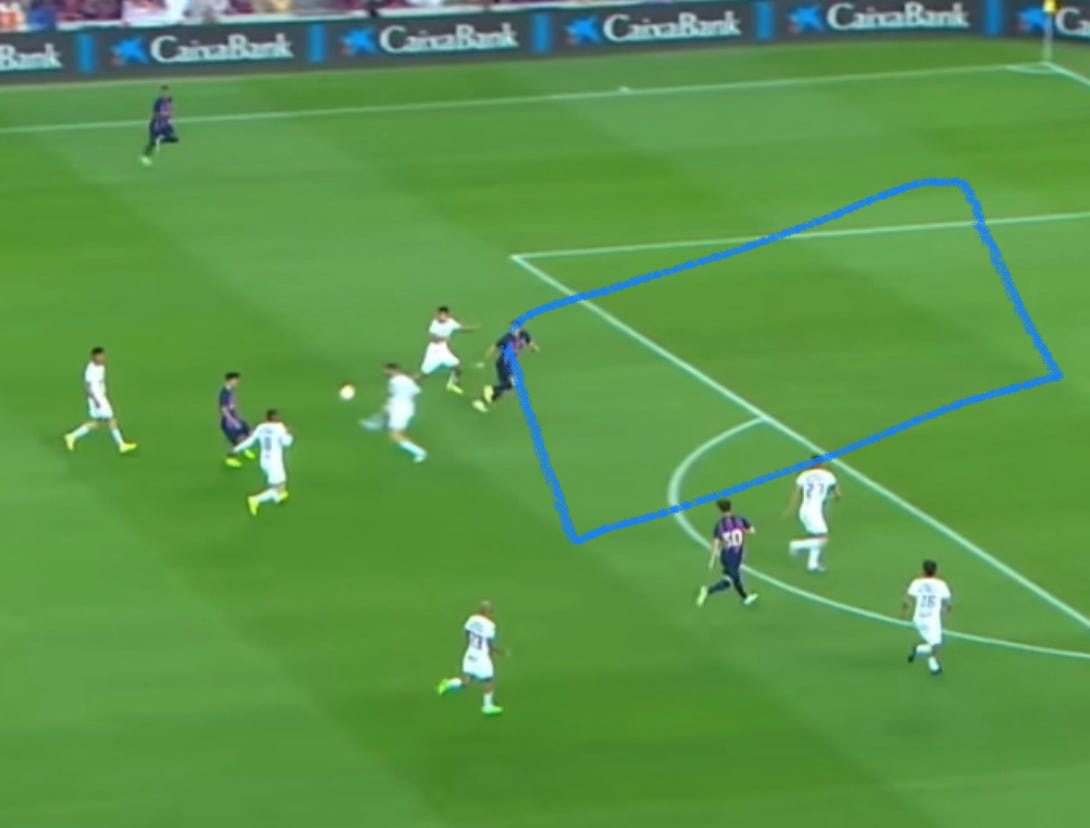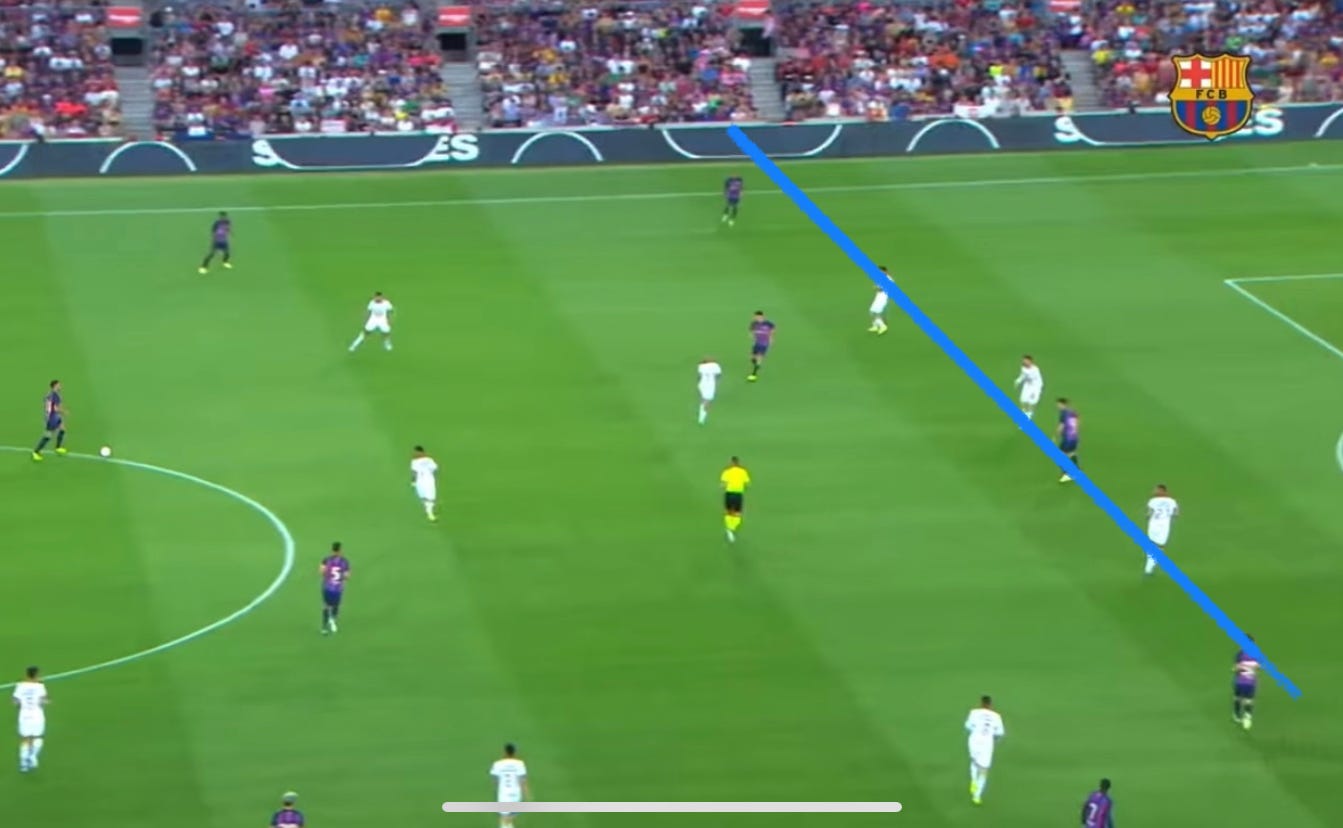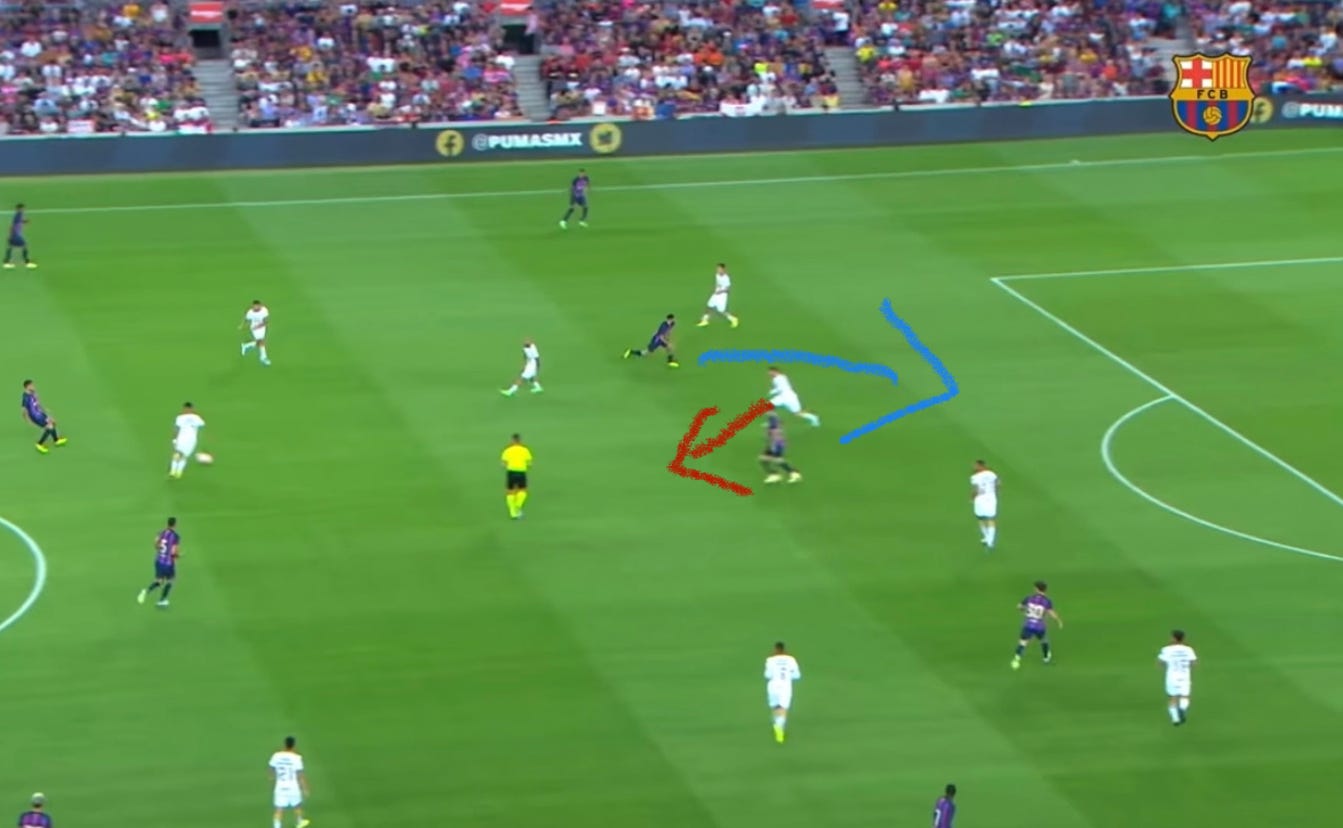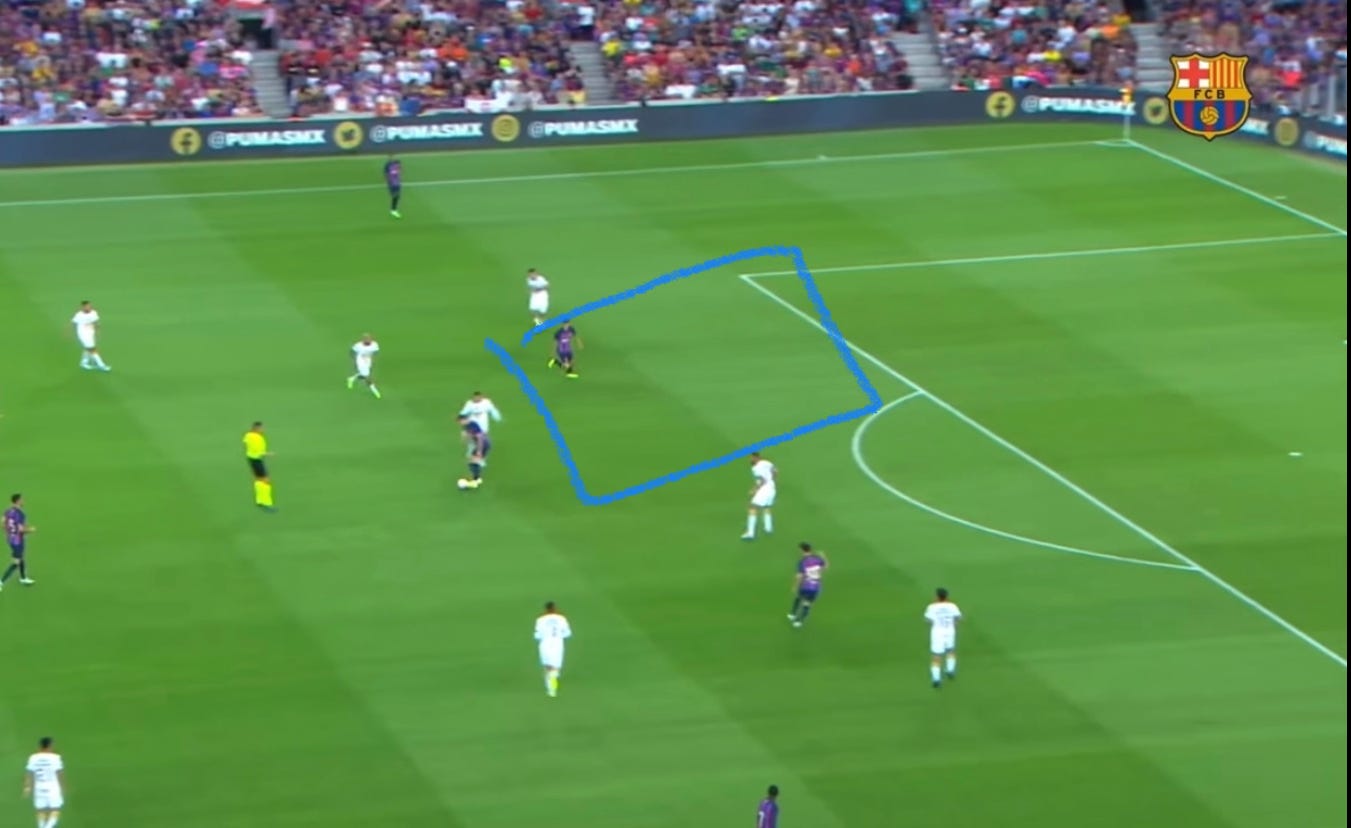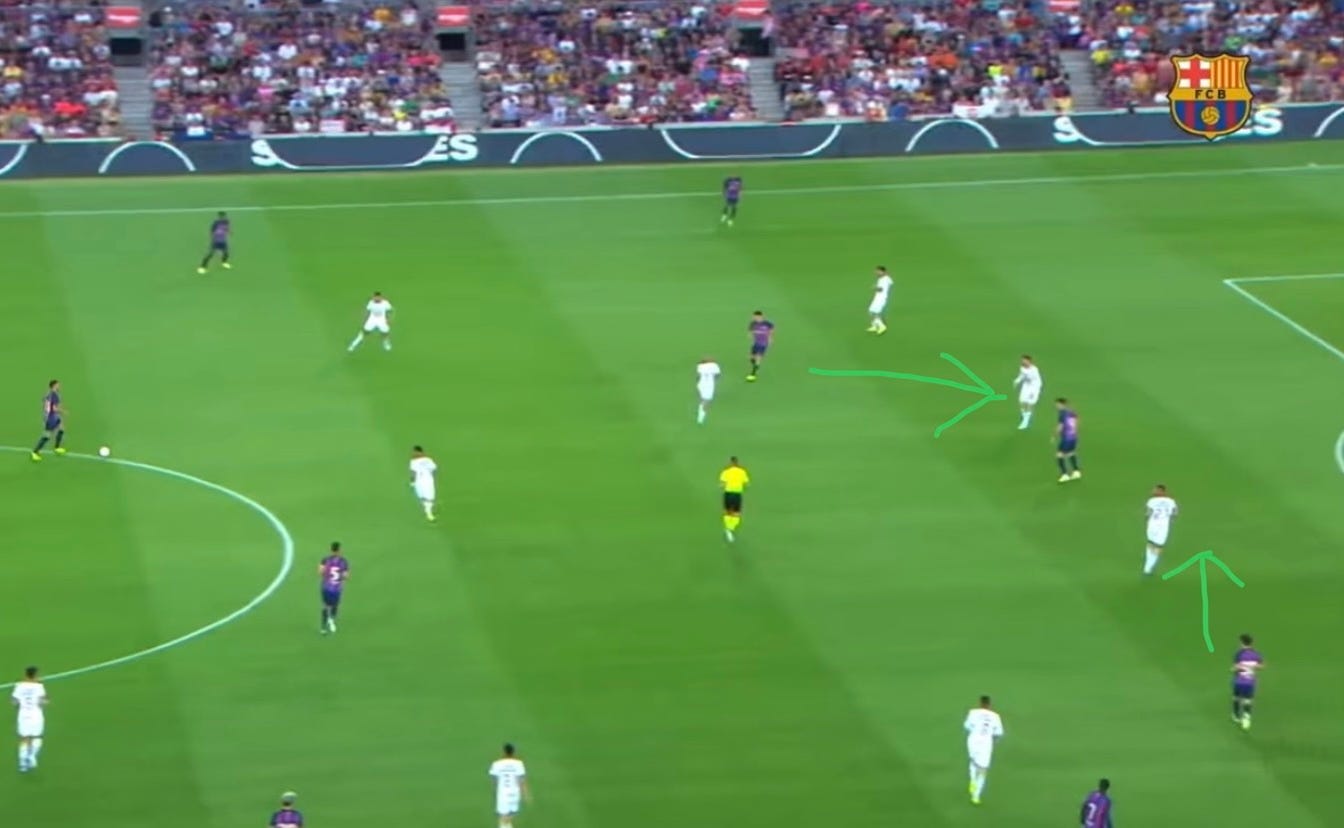Offensive Vision 101: Recently Vacated Space
Aggressive defenders are leaving space that can be exploited
Offensive creation is a woefully underserved piece of the game. Defense is easier to teach and cover while creating something takes more time and effort. We want to dive into that which is underserved.
Recently Vacated Space
Where a defender just came from is recently vacated space. This space is rarely filled and covered quickly by fellow defending teammates.
Open space can (and should) be quickly attacked by the attacking team. Almost always this will be valuable space… it’s why the defender was covering that space in the first place!
When looking where to pass, look towards where the pressure comes from, not away from the pressure. See slips, area, and hook passes for examples of how to get passes into this space.
A classic hockey example is the overlap:

Attacking Space In Front & Behind
Offensive players should be constantly asking questions of the defenders. Attackers are to be challenging the space in front and behind defenders.
Attacking the space in front of defenders is the concept of “TWIG,” or ‘Take What Is Given’.
Continuing to take the available space is a great tactic. During that time players should be scanning to identify help and space. What if the defense becomes aggressive and steps to commit to the puck/attacker? That’s when we must attack this recently vacated space created by the defender.

Related: See Sidney Crosby and Jake Guentzel exploit this very tactic.


FC Barcelona + Manchester City Offensive System
Once again, we turn to soccer for a template. This attacking tactic is part of FC Barcelona’s DNA. Their former player and coach Pep Guardiola is well versed in this tactic. Here is a video of a half-time team talk around attacking recently vacated space.
In Pep’s offensive system, players pass the ball to make the opponent jump and commit to the ball. When the opponent steps up to pressure, they attack the recently vacated space where the opponent stepped from.
Defenders are then flat-footed to the threats behind them. That is the perfect time to attack the space behind that the defender recently vacated/left.
Pep is now long gone and managing English-champion Manchester City, but the DNA of the offensive system remains, now with former player and current manager Xavi, who has been versed in this offensive tactic for decades.
In the examples below, keep in mind that as the defenders step and commit to the ball, an attacker will predictably run into and attack the space recently vacated by that defender. Thus, ball carriers and passers are looking to this space quickly.
Goal #1
Let’s take a look at this goal off the dribble. The ball carrier dribbles the ball forward into space in an attempt to attract defenders to step and commit to him.
We can see the space that is now available as the defender steps toward the ball carrier.
Goal #2
Let’s take a look at this goal off the pass:
We start this sequence by looking at a flat back line of white opponents. No danger present. With the backline setting the offsides line, the blue team’s players (Barcelona) are unable to build a speed differential.
We see the ball being passed to a player “dropping” and coming towards the ball. The nearest defender moves to pressure that player. As he does so, a Barcelona player is attacking into the space being vacated.
This movement creates space behind the defender pressuring the ball. The Barcelona player away from the ball moves into this recently vacated space.
One attacker is moving toward each central defender. As the pass receiver moves towards the ball, the attacking player simply has to play a first-time pass into the space of whichever defender steps to pressure him.
Here’s the clip at game speed:
Goal #3
One last example showcases the issue with defenders being disjointed, failing to attach to speed early, and getting caught flat-footed.
Bonus: A great pass off the defender’s heels
General Teaching Points
For ball/puck carriers … pull players in and pass to their old/vacated space
For potential receivers … move and accelerate into said recently vacated space

Further Reading
Did you enjoy this newsletter?
Help us spread the ideas within and share it with the people you care about





